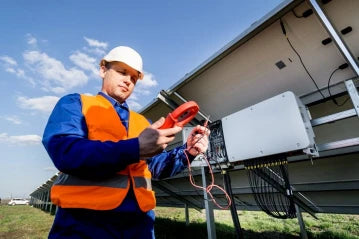
Welcome, solar enthusiasts! If you're venturing into the world of solar energy and considering purchasing solar-related products, one crucial component you must familiarize yourself with is the solar charge controller. Often overlooked, this little device plays a significant role in optimizing your solar power system's performance and protecting your investment. In this blog post, we will unravel the mysteries of solar charge controllers and help you make informed decisions for your eco-friendly journey.
Understanding Charge Controllers
Before we delve into the nitty-gritty of solar charge controllers, let's understand their importance in a solar power setup. These ingenious devices act as the gatekeepers of your solar energy, regulating the flow of electricity from your solar panels to the battery bank. Without them, you'd risk overcharging your batteries, leading to damage and potential safety hazards.
There are two main types of solar charge controllers: Pulse Width Modulation (PWM) and Maximum Power Point Tracking (MPPT). Each type has its advantages and applications, so choosing the right one for your specific needs is crucial.
10A Charge Controller Explained
One of the most common charge controller variants you'll come across is the 10A charge controller. The "10A" refers to its maximum rated current capacity, which determines the amount of current it can handle from your solar panels. While this may seem like a straightforward limitation, there's more to it than meets the eye.
Calculating Maximum Wattage
To get the maximum wattage a 10A charge controller can handle, you'll need to do a little math. Fear not; it's easier than it sounds! The formula for power (in watts) is simple: Watts = Volts x Amps. So, if you have a 12V solar panel, you can calculate the maximum wattage as 12V x 10A = 120W. Voila! That's the upper limit for your 10A charge controller.
Real-World Scenarios
Now, let's bring some real-world scenarios into the mix. Solar panels are not always operating at their peak capacity due to factors like shading, weather conditions, and panel orientation. So, even if your solar panel is rated at 120W, it may not always produce that much power.
Considering these variations is essential to avoid overloading your charge controller. Exceeding its maximum wattage capacity could lead to a suboptimal charging experience and even damage the controller or battery bank. Yikes! We definitely don't want that.
Overcoming Power Limitations
But fret not, fellow solar enthusiasts, for there are ways to overcome power limitations without breaking a sweat. One strategy is to balance the load across multiple charge controllers by using parallel and series connections. This allows you to distribute the power evenly and make the most of your solar setup.
However, if you find yourself constantly pushing the boundaries of your 10A charge controller, it might be time for an upgrade. Opting for a higher-rated charge controller can handle more wattage and provide more headroom for future expansions, giving you peace of mind and a future-proof solar energy system.
Case Studies
Let's dive into some real-life examples of solar setups with 10A charge controllers. Meet Sarah, a DIY solar enthusiast. Sarah installed a 12V, 100W solar panel on her RV roof, perfectly matched with a 10A charge controller. Her careful calculations and consideration of real-world factors ensured her charge controller never excee ded its limits, allowing for smooth, uninterrupted charging. She's now happily exploring the country powered by the sun!
Expert Tips and Recommendations
To ensure you make the best choices for your solar energy system, we've gathered some expert advice for you. It's crucial to consult professionals when sizing your charge controllers based on your solar panel configurations. They can help you optimize your setup for maximum efficiency and cost-effectiveness, saving you both time and money in the long run.
Conclusion
Congratulations! You've conquered the world of solar charge controllers. We hope this blog post has shed some light on this essential but often overlooked component of solar energy systems. As you embark on your green energy journey, remember to choose the right charge controller, consider real-world scenarios, and never hesitate to seek expert guidance.
Now, armed with this knowledge, you can confidently select the perfect solar charge controller to harness the sun's power effectively and sustainably. Happy solar powering!

0 Kommentare